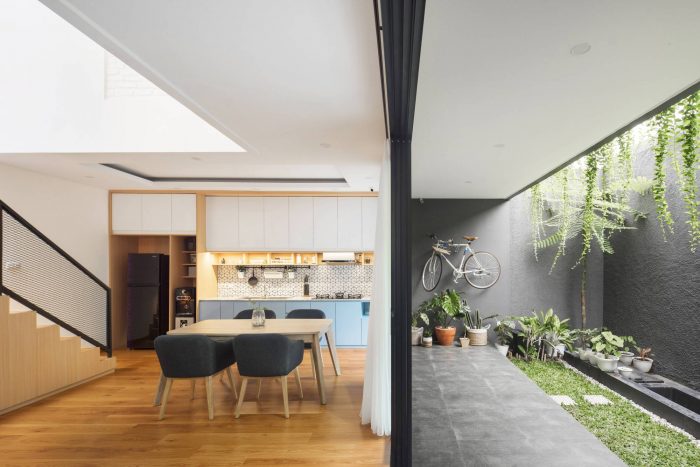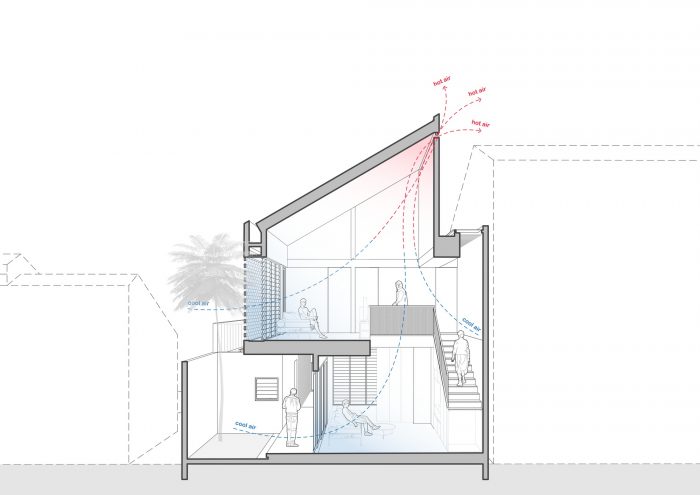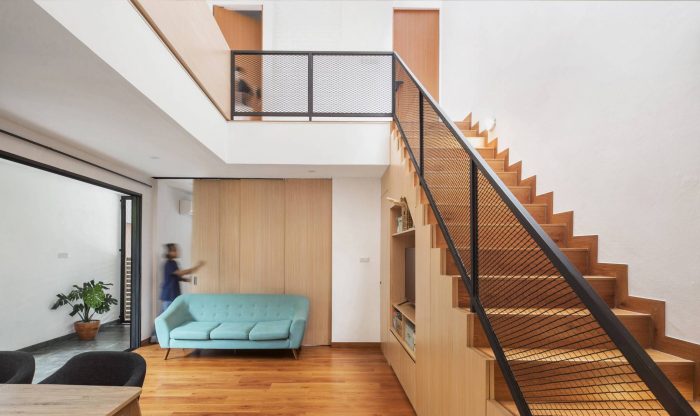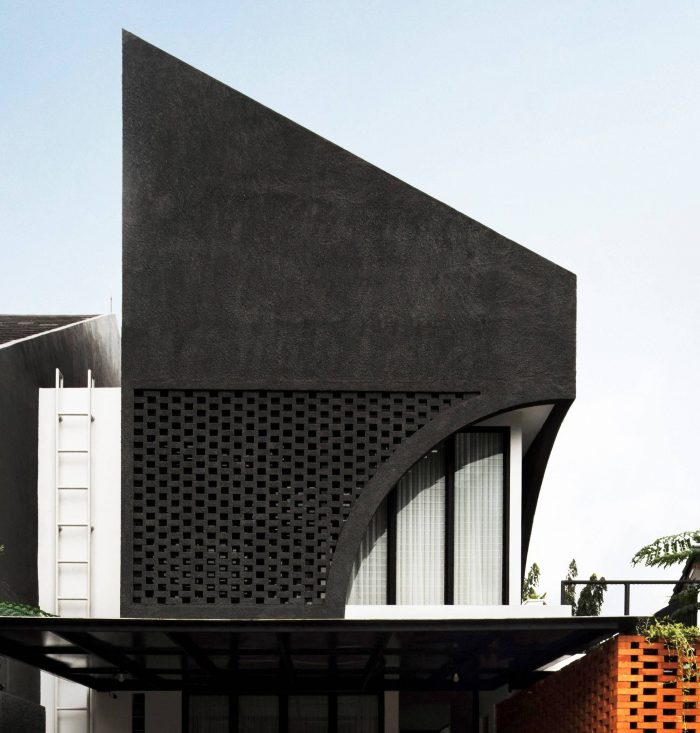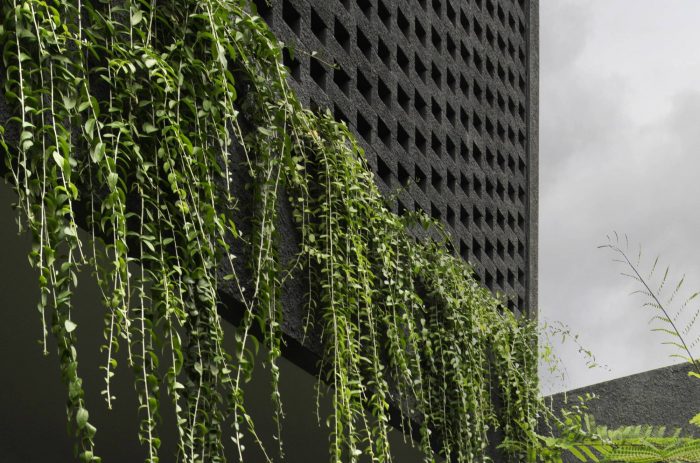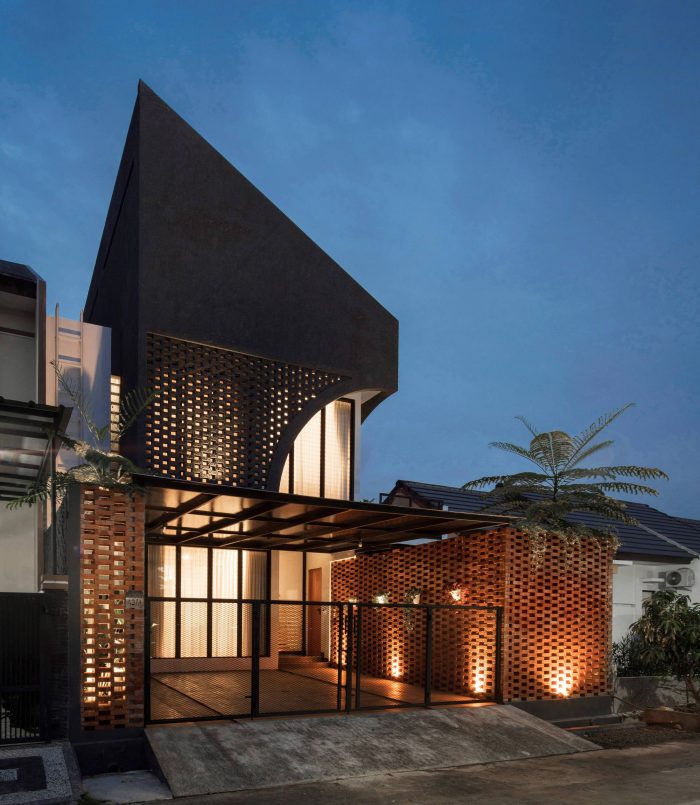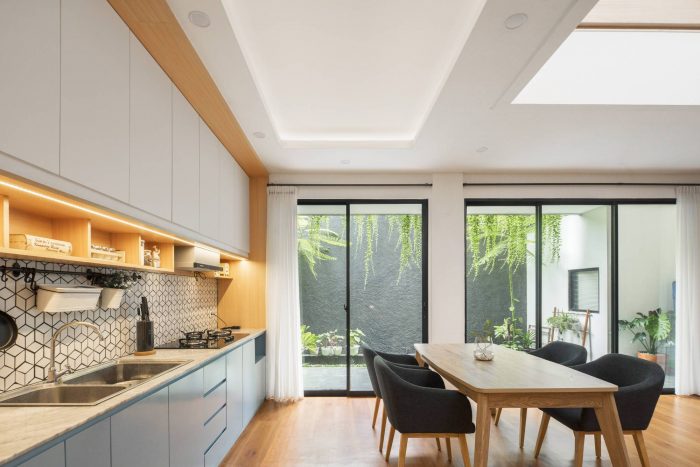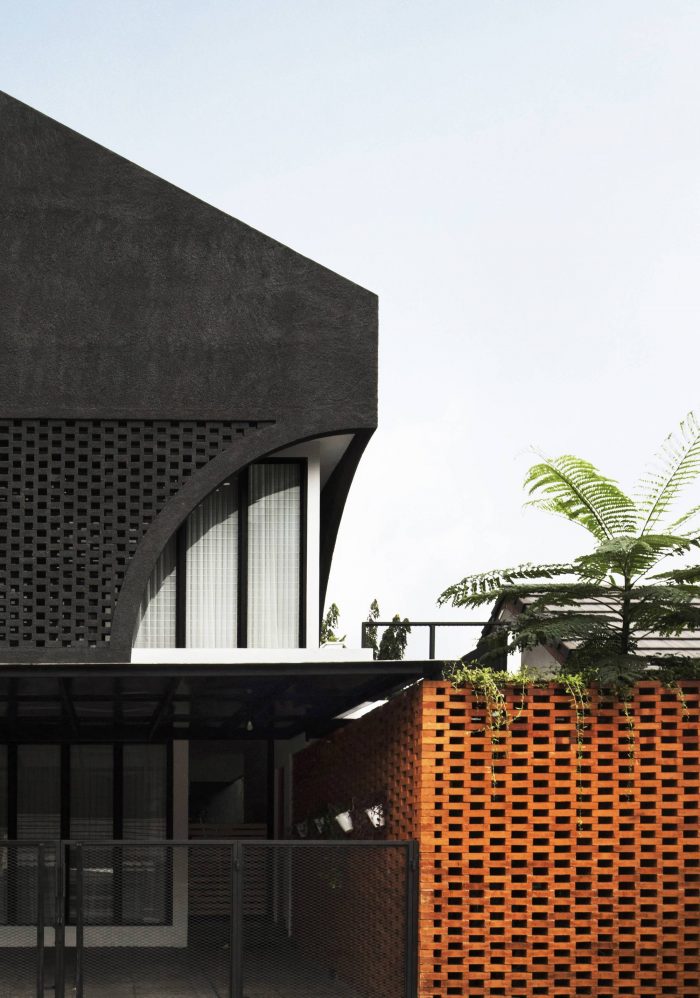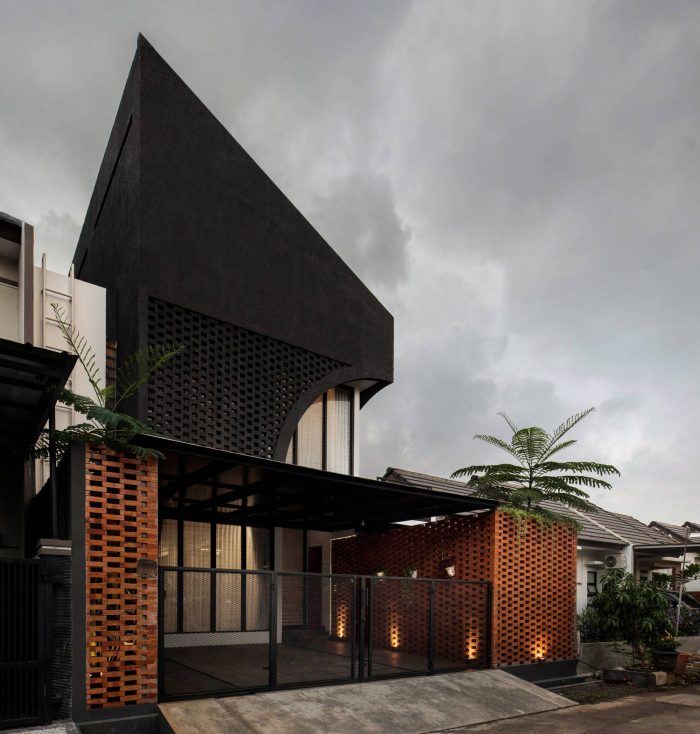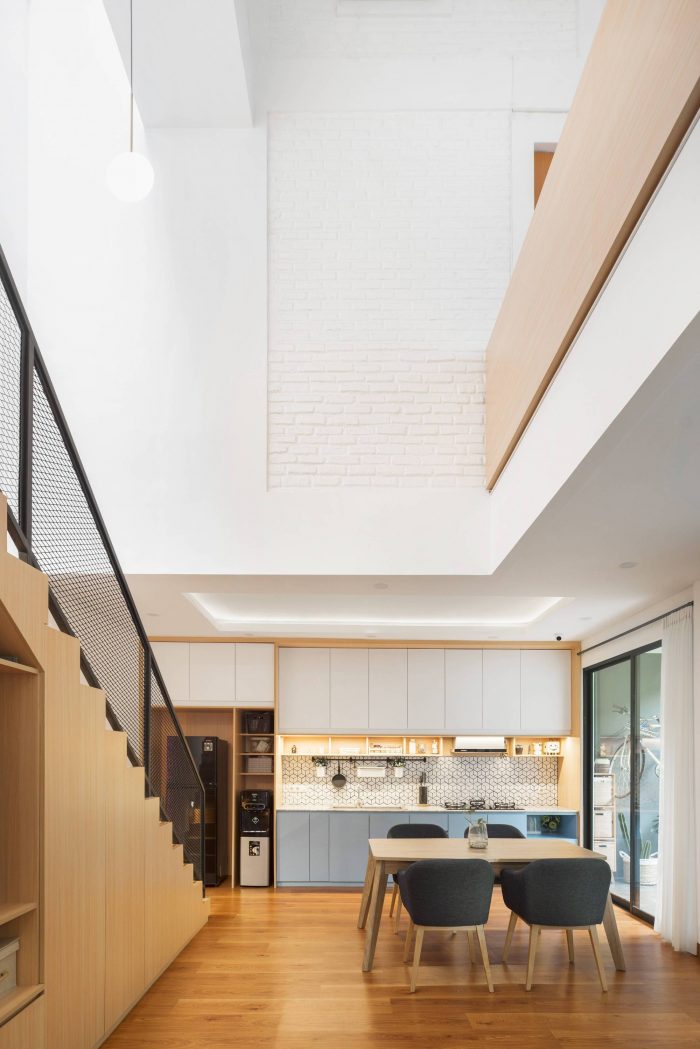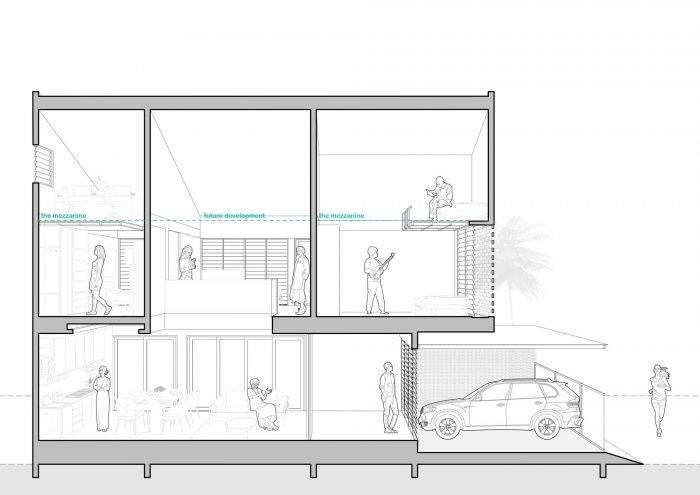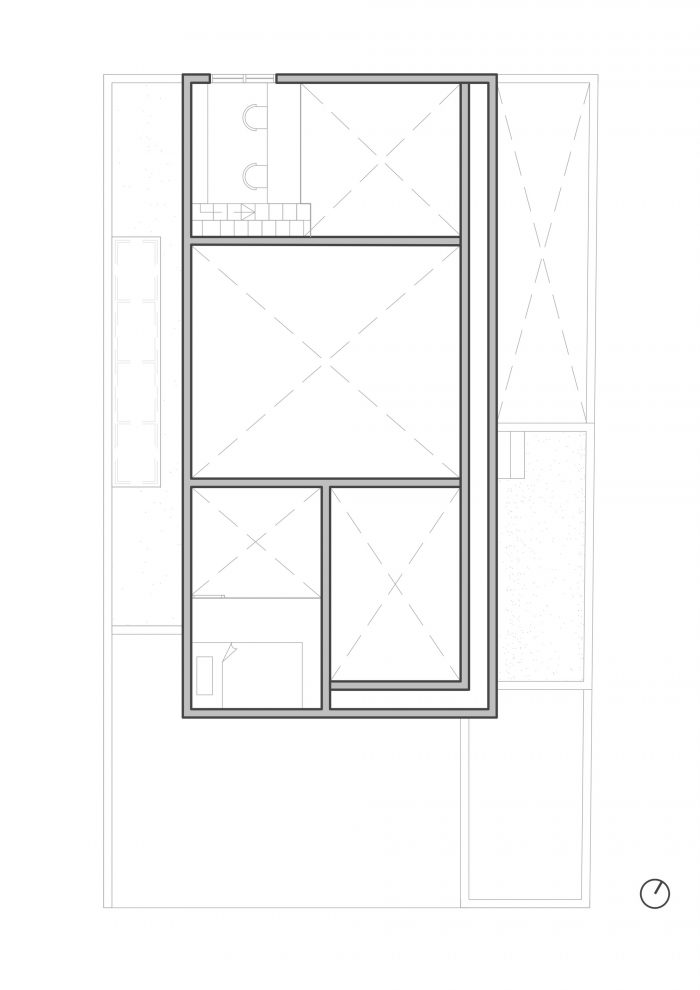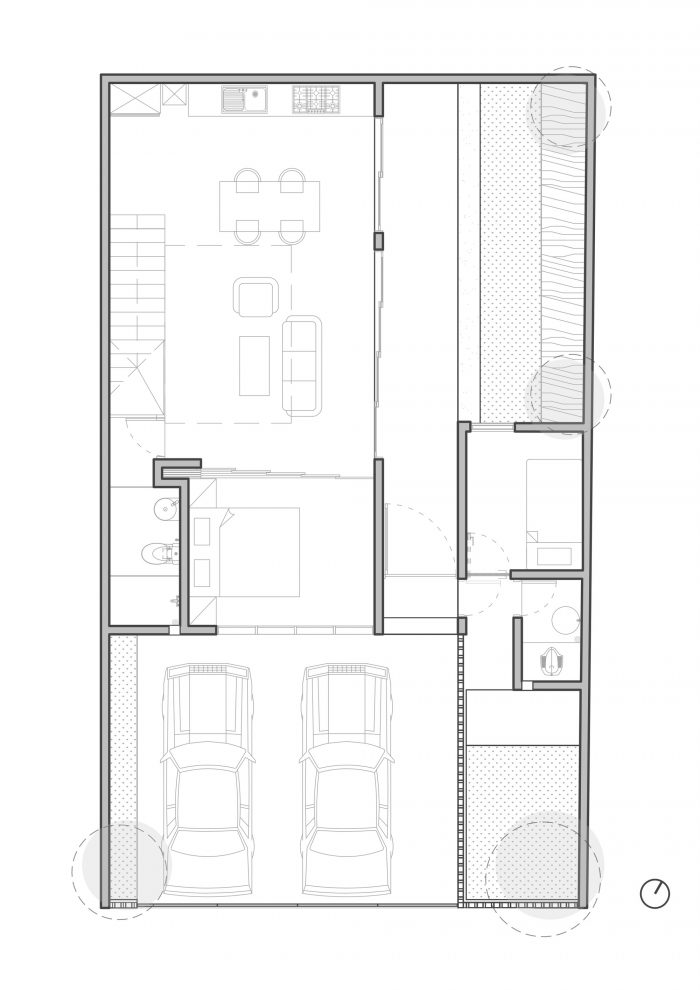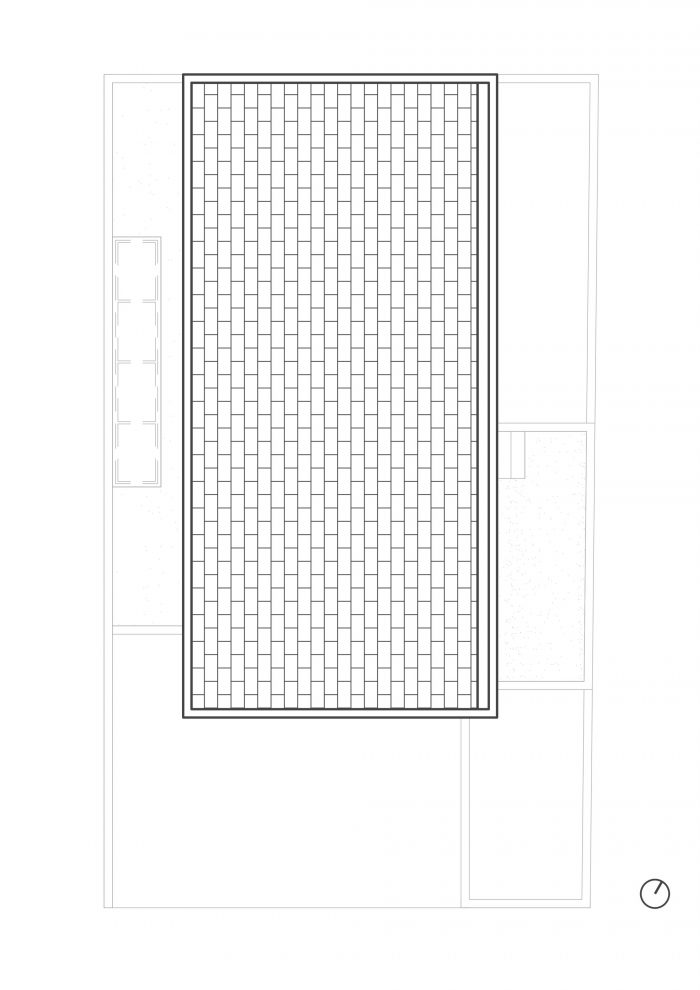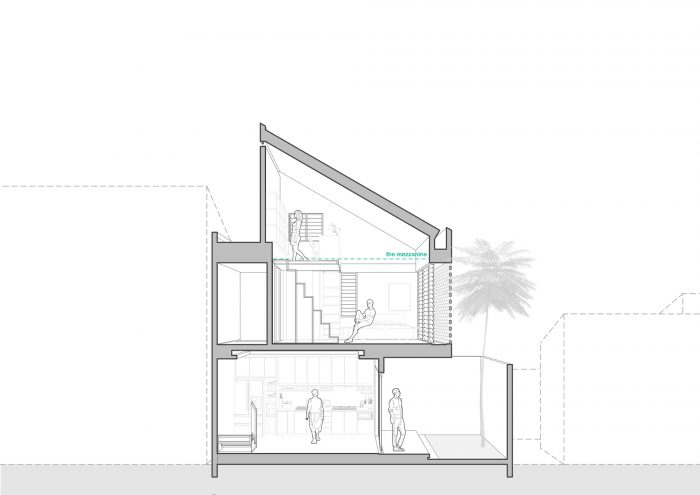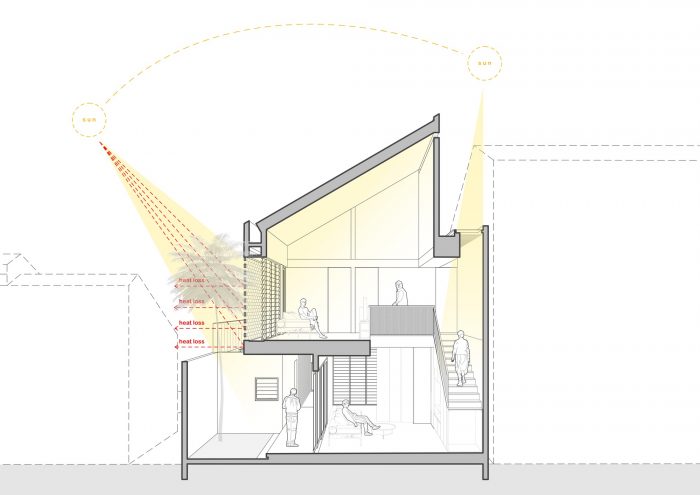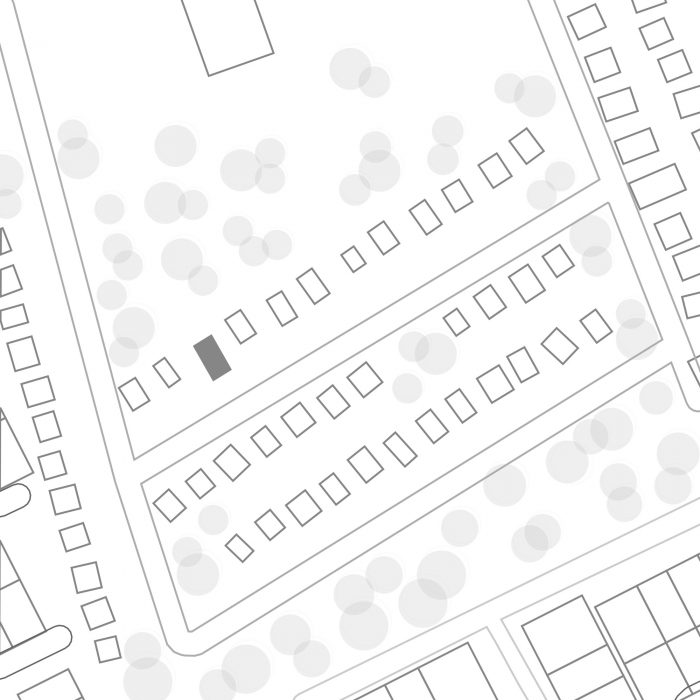从位于印度尼西亚北别卡西的一个住宅区开始,一个现有的四口之家希望能设计出一栋独特的、有别于邻里住宅模板的房子。这栋房子占地130平方米,设计时采用了新的概念,优先考虑空间需求、健康的空气流通、自然采光,以及从主立面可以看到的引人入胜的表情和温暖的印象。利用场地面积的优势,建筑体量分为两个区域。
Starting from a housing complex located in North Bekasi, Indonesia, an existing house that is occupied by four member family wants a designed house that is unique and different from the neighborhood house template. The house which stands on an area of 130m2 is designed with a new concept that prioritizes space requirements, healthy air circulation, natural lighting, and catchy expression yet warm impression that can be seen from the main façade. Taking advantage of the site area, the building mass divided into two zones.
第一个体量放在土地的西侧,以遮挡来自西面的太阳热量,第二个体量放在东南面。这种区域分隔的目的是将服务和园林与西侧的主要功能分开,这样可以最大限度地利用土地。通过这种配置,西部的主要体量可以从东部和南部获得更多的自然光。天窗也是为了让屋顶的自然光照射进来,但不宜过多,因为它只用于西面(区)的楼梯区(位于)。此外,为了减少白天从东边进入的热量,整个房屋外墙也采用了实心空心砖材料作为第二层皮肤的布置。
The first mass is placed on the west side of the land to cover the sun’s heat from the west, and the second mass is placed on the south east. This zone separation aims to separate the service and garden from the main function on the west so it can maximize land use. With this configuration, the main mass in the west can receive more natural light from the east and south. Skylights are also used to allow natural light from the roof, but not excessive because it is only for the staircase area (which is located) in the west (zone). Besides, the arrangement of solid void brick material as a second skin is also applied throughout house facades to reduce the heat entering from the east during the day.
这种砖的排列方式还在其背后设置了百叶窗玻璃(jalousie window),以使自然空气循环进入屋内。利用烟囱效应,将进入的自然气流通过中间的空隙转发,然后将热空气从屋顶的墙体缝隙排出,使室内温度保持在较低状态。房屋中间高空的存在,不仅仅是用来通风和采光,还可以纵向增加与未来需求相关的空间。
This brick arrangement is also equipped with a louver glass (jalousie window) behind it to circulate natural air into the house. By using the chimney effect, the incoming natural airflow is forwarded through the void in the middle, then hot air will exit through the wall gap in the roof to maintain the room temperature into cooler state. The existence of a high void in the middle of the house is not only used for airing and lighting but can be a vertical addition of space-related to future needs.
例如在主卧中存在一个夹层,作为工作区。三色调的概念也被运用到这套房子中,使用自然色,如深灰色、赤土色、白色。深灰色占据了二楼建筑的主立面,不仅定义了直爽的阳刚之气,而且考虑到房址位于工业区附近,可以最大限度地减少灰尘,达到维护的目的。深灰色的颜色还与一系列的实心空心砖相结合,由南向北开始然后以拱形结束,以柔化尖锐的主立面的外观。
An example is a presence of a mezzanine in the master bedroom which functions as a work area. The triple tone concept is also applied to this house by using natural colors, like dark gray, terracotta, and white. Dark gray color dominates the main façade of the building on the second floor not only defining a straight masculine looks, but also can minimize dust for maintenance purposes, considering that the house site is located near an industrial area. The dark gray color is also combined with a series of solid void bricks starting from the south to the north then ending with an arch to soften the appearance of the pointed main façade.
明亮且对比强烈的赤陶色被放置在第一层,同时仍然使用实心空心砖的排列,使它们具有相同的语言。同时,白色更彻底的应用到室内,呈现出明亮自然的印象,体现出家庭的特点。家庭房、餐厅、厨房等核心空间的布置在一楼的一条线上,便于相互关联的活动。同时,这三个房间还特意暴露在由李冠宇藤蔓遮挡的花园中,以显示外部与温馨室内的联系。
The brighter and contrasting terracotta color is placed on the first floor, while still using the arrangement of solid void bricks so that they have the same language. Meanwhile, white color is applied more thoroughly into the interior to present a bright and natural impression that reflects the family. The placement of the core spaces such as the family room, dining room, and kitchen are placed on a line on the first floor to facilitate activities that are related to one another. Also, these three rooms are deliberately exposed to a garden shaded by lee kwan yeu vines to show the connection between the outside and the heartwarming interior.
建筑师:Atelier Bertiga
面积:165 m²
年份:2020年
摄影:Ernest Theofilus
设计团队:Dhidhot Bima, Andrea Daniswara, Azhar Rahman, Firman R. Faza, Aldana A Z
城市:Bekasi
国家:印度尼西亚
Architects: Atelier Bertiga
Area: 165 m²
Year: 2020
Photographs: Ernest Theofilus
Design Team:Dhidhot Bima, Andrea Daniswara, Azhar Rahman, Firman R. Faza, Aldana A Z
City:Bekasi
Country:Indonesia



